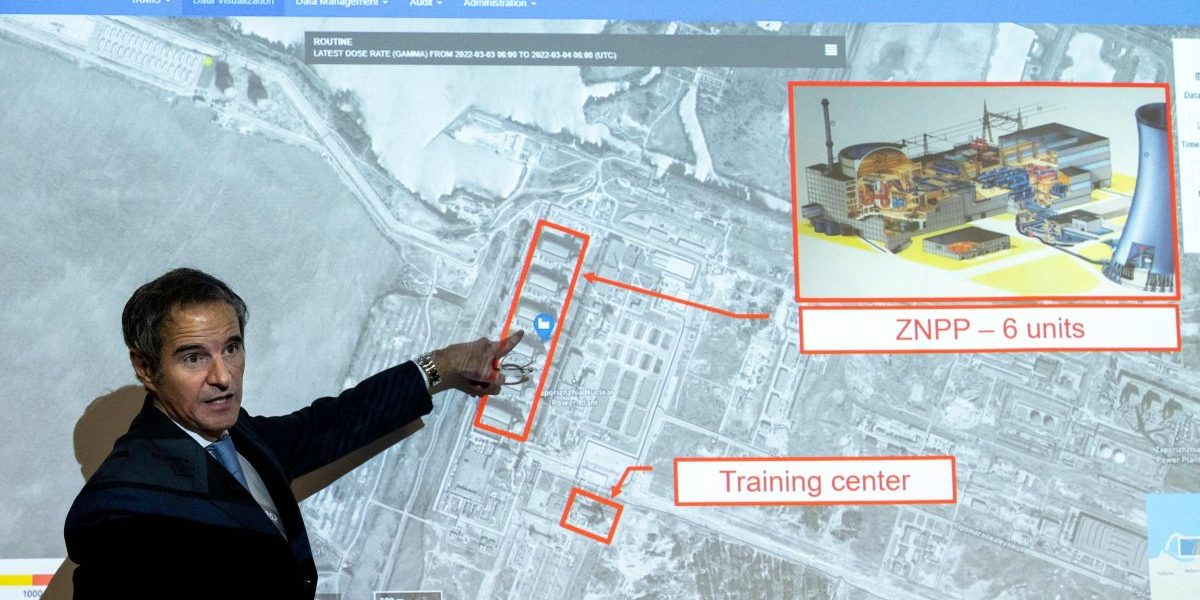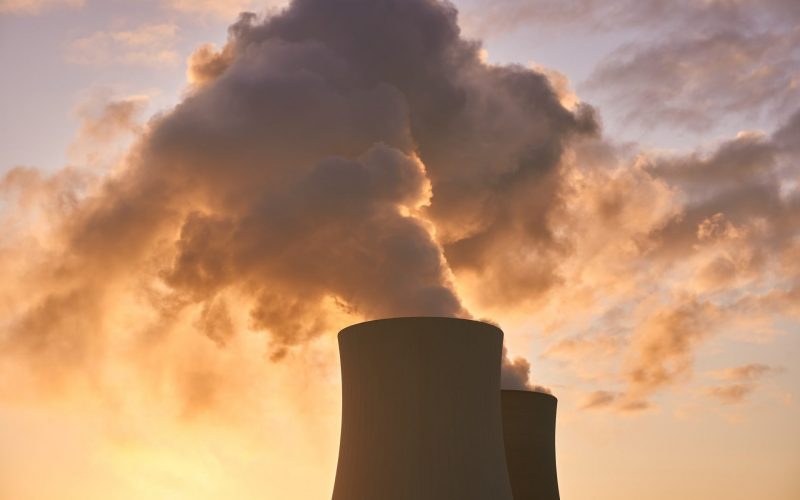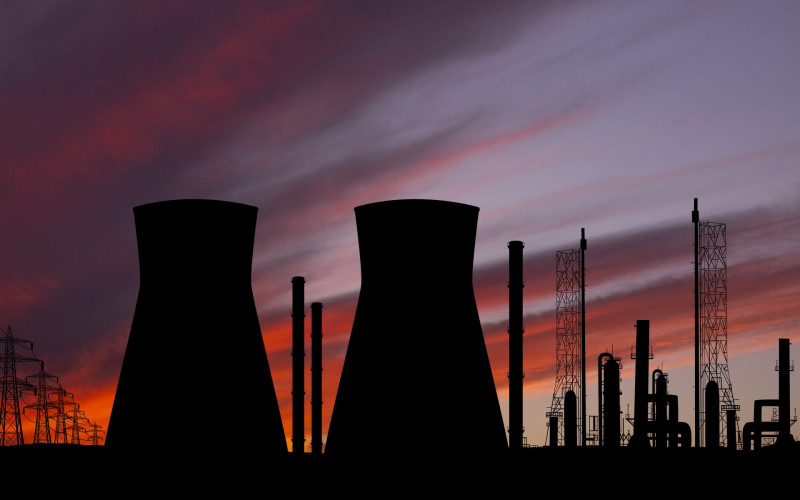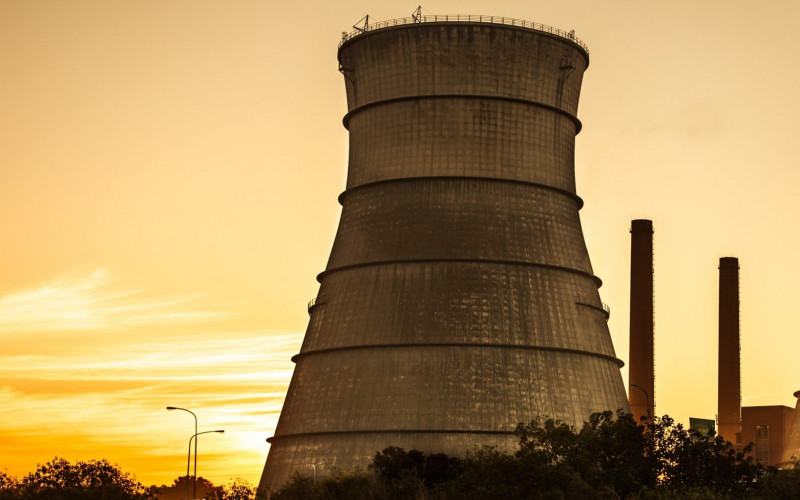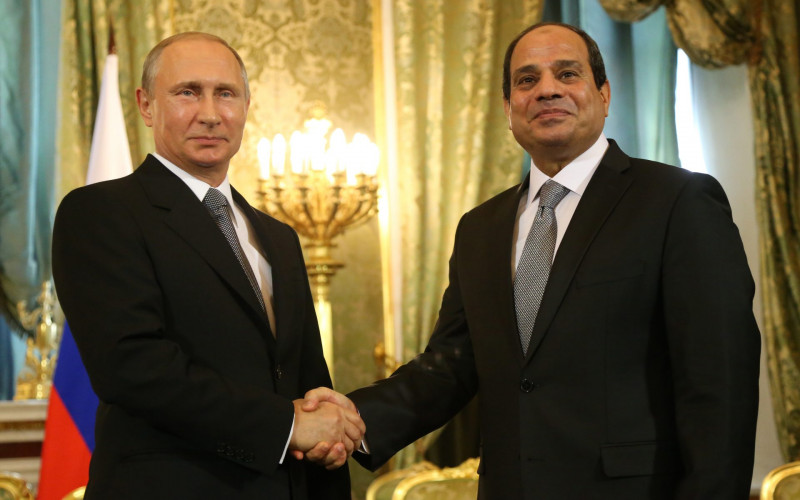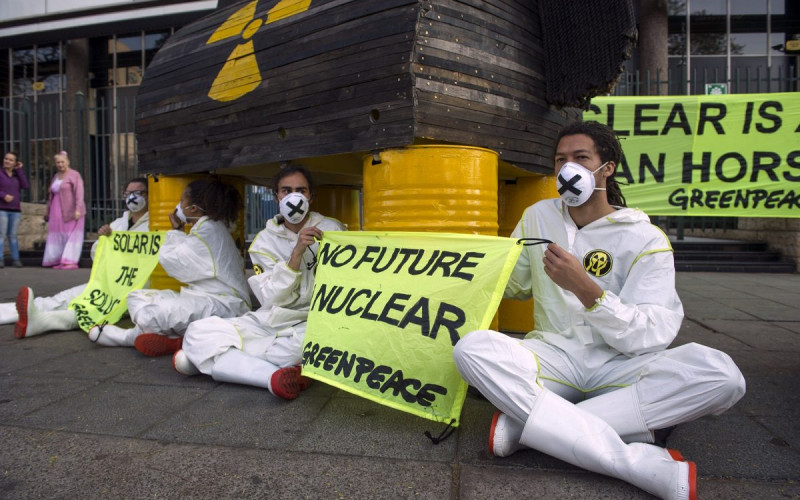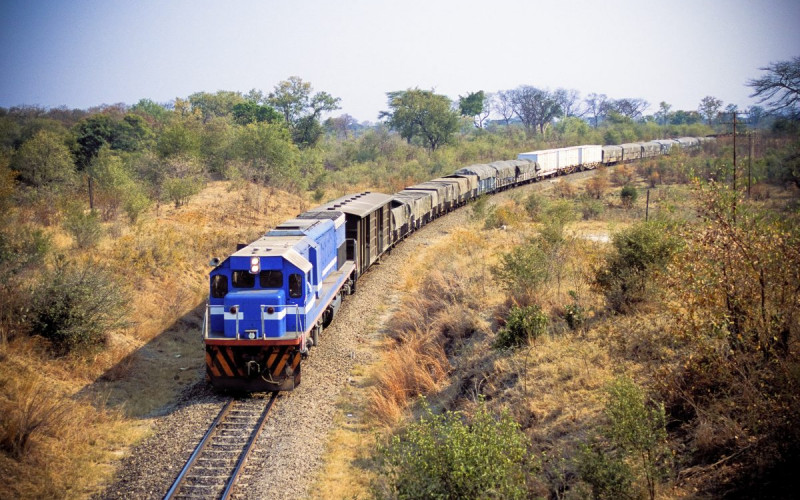Recommendations
- Nuclear regulatory bodies, such as the International Atomic Energy Agency (IAEA), should be allowed to exercise its watchdog functions unimpeded even in difficult circumstances like armed conflict.
- The international community should heed the warnings of nuclear regulatory bodies within Ukraine as well as those made by the IAEA to prevent a large-scale nuclear disaster.
- International law means very little without consistent enforcement and accountability; now is a good time to weigh the future of the international legal framework and its success.
- There is a strong need for codifying customary international law relevant to critical infrastructure in non-international armed conflict.
Executive summary
The invasion of Ukraine in February 2022 raised several questions about the effectiveness of international law, especially as it pertains to states’ territorial integrity and political independence. With the targeting of radioactive and nuclear sites in Ukraine, questions around the legal protection of nuclear installations have also surfaced. Safety and security at Ukraine’s Zaporizhzhia Nuclear Power Plant – Europe’s largest – has come under threat several times since March 2022. Various emergency measures have been implemented to prevent a radioactive incident, but the danger has not passed. Critical infrastructure, including nuclear installations, are protected under customary international law and there are clear prohibitions on armed attacks against them. But these directives have on occasion been discarded in favour of political considerations. This does not mean that new legal measures are required, but it does call for serious reflection so that international law can come to terms with its shortcomings and to find ways for strengthening its accountability measures.
Introduction
The Russian invasion of Ukraine in February 2022 sparked many questions about the effectiveness of international law. Most of these concerns relate to territorial integrity and political independence, tying back to Article 2(4) of the UN Charter.1UN, ‘Charter of the United Nations’, San Francisco, 1945, https://treaties.un.org/doc/publication/ctc/uncharter.pdf The Russian Federation also drew on Article 51 to argue that it has a right to self-defence.2UN, ‘Charter of the UN.’ This war has raised important questions about international humanitarian law, including concerns about the humanitarian and environmental impacts of safety and security breakdowns at nuclear and other radioactive sites in Ukraine. Such fears were inspired by Russia’s occupation of the Chornobyl exclusion zone 3‘Chornobyl’ is the Ukrainian spelling. The exclusion zone is a dedicated area around the Chornobyl nuclear power plant to which public access has been restricted because of the dangers of radiation and radioactive material still contained inside the plant. and reactor complex in the early days of the war,4Cara Anna and Inna Varenytsia, ‘Russia’s Chernobyl seizure seen as nuclear risk nightmare’, Associated Press, April 20, 2022, https://apnews.com/article/russia-ukraine-business-health-europe-accidents-edcd5bc0e6bde3cbf6d7300bebc9343f. as well as reports of attacks on a radioactive waste disposal site outside Kyiv.5BNO News, Radioactive waste disposal site near Kyiv hit by airstrike’, February 26, 2022, https://bnonews.com/index.php/2022/02/radioactive-waste-disposal-site-kyiv-hit-by-airstrike/.
Military action in the direct vicinity of the Zaporizhzhya Nuclear Power Plant (ZNPP) – Europe’s largest –has been the source of ongoing debate and worry. On 13 April 2023, Rafael Mariano Grossi, Director General of the International Atomic Energy Agency (IAEA), said:6IAEA, ‘Update 153 – IAEA Director General Statement on Situation in Ukraine’, April 13, 2023, https://www.iaea.org/newscenter/pressreleases/update-153-iaea-director-general-statement-on-situation-in-ukraine. We are living on borrowed time when it comes to nuclear safety and security at the Zaporizhzhya Nuclear Power Plant. Unless we take action to protect the plant, our luck will sooner or later run out, with potentially severe consequences for human health and the environment.
We are living on borrowed time when it comes to nuclear safety and security at the Zaporizhzhya Nuclear Power Plant. Unless we take action to protect the plant, our luck will sooner or later run out, with potentially severe consequences for human health and the environment.
John Carlson, non-resident senior fellow at the Vienna Centre for Disarmament and NonProliferation, maintains that the danger posed by military attacks on nuclear installations ‘highlights the need (a) for clear international legal rules prohibiting military attacks on or near nuclear facilities, and (b) for all states to observe such rules.’ 7John Carlson, ‘Prohibition of military attacks on nuclear facilities’, Vienna Centre for Disarmament and Non-Proliferation, September 2022, https://vcdnp.org/wp-content/uploads/2022/09/Attacks-on-nuclear-facilities.pdf. Various aspects of nuclear safety and security have found expression in international law. This includes cementing the right to the peaceful uses of nuclear energy, putting mechanisms in place to limit nuclear proliferation, and protecting nuclear installations in times of war.
This latter aspect is codified primarily in customary international law, described by the International Committee of the Red Cross (ICRC) as ‘of crucial importance in today’s armed conflicts because it fills gaps left by treaty law in both international and non-international conflicts and so strengthens the protection offered to victims.’ 8ICRC, ‘Customary international humanitarian law’, October 29, 2010, https://www.icrc.org/en/document/customary-internationalhumanitarian-law-0. But the current legal framework to protect nuclear installations against armed attack has on several occasions taken a backseat to political considerations and objectives as armed attacks on nuclear installations in Iraq in 1980, 1981, 1991 and 1993, Iran between 1984 and 1987, Syria in 2007, and Israel in 2014 demonstrate.9Carlson, ‘Prohibition of military attacks’.
This policy brief will assess the current situation at ZNPP by considering possible accident scenarios and risks before evaluating the existing legal framework for protecting nuclear installations in times of war. It considers specifically Additional Protocols I and II to the Geneva Conventions and Africa’s Pelindaba Treaty.
ZNPP: What’s the story?
ZNPP is located on the Dnipro River in the city of Enerhodar, in Ukraine’s Zaporizhzhia province. ZNPP has been responsible for 50% of all nuclear power generated in Ukraine and around 21% of the country’s total electricity generation.10Assef Molhem, ‘Possible Accidents Scenarios in Zaporizhzhia Nuclear Power Plant’, Open Access Library Journal, 10: e9592. ZNPP consists of six VVER1000/V-320 reactors11These are Soviet-style pressurised water reactors. VVER – Voda Voda Energo Reactor or water-water energetic reactor – is the most widely used nuclear reactor type in the world. Sergei B. Ryzhov et al. ‘VVER-Type Reactors of Russian Design’, in Handbook of Nuclear Engineering, 2249-2320, https://link.springer.com/referenceworkentry/10.1007/978-0-387-98149-9_20. and traces its origins back to 1978. Commissioning of the first four units of ZNPP was done between 1984 and 1987. Units five and six were commissioned in 1989 and 1995.12Molhem, ‘Possible Accidents Scenarios’.
On 4 March 2022, the IAEA was informed by Ukrainian authorities that Russian military forces had taken control of ZNPP. Damage was reported to several structures, including a laboratory building, after a projectile strike.13IAEA, ‘2nd Summary Report by the Director General 28 April,’ Nuclear Safety, Security and Safeguards in Ukraine, (5 September 2022): 9, https://www.iaea.org/sites/default/files/22/09/ukraine-2ndsummaryreport_sept2022.pdf. Subsequent incidents reported to the IAEA in the months after initial seizure of the plant include the following:14IAEA, ‘2nd Summary Report’.
- cruise missiles passing over ZNPP;
- stationing of Russian military equipment in the turbine hall at ZNPP units one and two;
- stationing of Russian military vehicles in the facility’s repair zone;
- shelling of ZNPPs nitrogen-oxygen station;
- damage to the plant’s offsite power supplies, damage to spent fuel and communication facilities; and
- damage to the plant’s reactor buildings, among other reported incidents15Carlson, ‘Prohibition of military attacks’. (as a result of increased shelling around the site).
The IAEA has had some presence in Ukraine since the start of the war to monitor the nuclear safety and security situation following Russian occupation of the Chornobyl exclusion zone. However, it was only granted access to the ZNPP site on 1 September 2022 when an IAEA team led by the Director General himself visited the site to conduct their inspections. Two IAEA staff members have since remained at ZNPP to fulfil a monitoring role.16Carlson, ‘Prohibition of military attacks’
No significant damage to the physical integrity of the reactors or release of radiation from the facility have so far been reported. But that does not disqualify it as a legitimate concern. The site’s six reactors are protected by reinforced concrete containment structures. These are designed, as with most contemporary nuclear power plants, to prevent the release of harmful radioactive material in the case of an accident.
The concrete reinforcement structures can withstand attack for some time, but they are not impenetrable. Should these structures fail, an additional layer of stainless steel protects the radioactive core of the reactors; however, these encasements are also not able to withstand attack indefinitely.17George M. Moore, ‘How international law applies to attacks on nuclear and associated facilities in Ukraine’, Bulletin of the Atomic Scientists, March 6, 2022, https://thebulletin.org/2022/03/how-international-law-applies-to-attacks-on-nuclear-and-associatedfacilities-in-ukraine/ Therefore, it is important to remember that ‘the effectiveness of the containments would depend on the intensity of any attack’.18Carlson, ‘Prohibition of military attacks’. According to George Moore of the James Martin Center for Nonproliferation Studies, compromising the physical integrity of the ZNPP plant – ie, penetrating both the concrete and stainless steel encasements – would likely require ‘sustained and well targeted bombardment and/or precision penetrating munitions’.19Moore, ‘How international law applies’.
Serious alarm has, however, been raised concerning the condition of external power supply to the plant. This is regarded as a more immediate concern to critical safety and security failure at the plant as it relates directly to what Moore has described as ‘the primary damage risk’ at ZNPP – ‘that the reactor system will be damaged in a manner that the reactor will carry out its own destruction’.20Moore, ‘How international law applies’. Back-up electricity supply is a vital component for the safe functioning of any nuclear power plant and is necessary for ‘cooling for the removal of decay heat produced by shutdown reactors, and to maintain services to the site’.21Molhem, ‘Possible Accidents Scenarios’, 4.
ZNPP is connected to the grid via four 750 kV external power lines, with a fifth as a failsafe. ZNPP is also supported by 20 back-up diesel generators to ensure normal operation and emergency functions, like cool shutdown, should off-site power be lost.22IAEA, ‘2nd Summary Report’. Under normal circumstances, the plant is self-sufficient and runs on the electricity it generates. In the case of reactor shutdown, the external power supply and back-up generator system are not only the lifeline for the plant itself, but the environment around it. Four of ZNPP’s reactors have been placed in cold shutdown, powered down gradually due to safety concerns. The remaining two were restarted in hot shutdown mode to retain some operational capabilities.23Amy J Nelson and Chinon Norteman, ‘What to do about the Zaporizhzhia nuclear power plant’, Brookings, March 23, 2023, https://www.brookings.edu/blog/order-from-chaos/2023/03/23/what-to-do-about-the-zaporizhzhia-nuclear-power-plant/.
Cold shutdown is the process whereby control rods are inserted between the reactor’s fuel rods to stop the nuclear fission reaction, which is responsible for generating heat, from taking place. This reduces pressure and temperature inside the reactor. Because the fission reaction is halted, it is not necessary to pump cooling water through the system at the same levels required when the reactor is fully operational.24Najmedin Meshkati, ‘Cold shutdown reduces risk of disaster at Zaporizhzhia nuclear plant – but combat around spent fuel still poses a threat’, The Conversation, September 13, 2022, https://theconversation.com/cold-shutdown-reduces-risk-of-disaster-atzaporizhzhia-nuclear-plant-but-combat-around-spent-fuel-still-poses-a-threat-190516. In hot shutdown, by contrast, the reactor remains at ‘operating pressure and temperature’.25IAEA, ‘Nuclear power plant outage optimisation strategy’, IAEA-TECDOC-1315, October, 2002, https://www-pub.iaea.org/MTCD/Publications/PDF/te_1315_web.pdf, 23.
Of the high voltage lines connecting the site to the grid, two were damaged and one was lost shortly after the plant was taken over by Russian forces in March 2022.26IAEA, ‘2nd Summary Report’. However, in September and November 2022, IAEA staff reported that ZNPP had lost connection to its offsite power source completely. An urgent statement was issued by the IAEA Director General on 9 September: 27IAEA, ‘Director General’s Statement on Serious Situation at Ukraine’s Zaporizhzhya Nuclear Power Plant’, September 9, 2022, https://www.iaea.org/newscenter/statements/director-generals-statement-on-serious-situation-at-ukraines-zaporizhzhya-nuclearpower-plant.
‘Enerhodar has gone dark’, he said. ‘The power plant has no offsite power. And we have seen that once infrastructure is repaired, it is damaged once again. This is completely unacceptable. It cannot stand’.
Being disconnected from its offsite power source is a contributing factor to one of the most likely accident scenarios at ZNPP: loss of water cooling.28Carlson, ‘Prohibition of military attacks’. Spent fuel ponds as well as the six reactors are dependent on cooling, especially during shutdown, as nuclear fuel retains residual heat that could contribute to a nuclear accident if not cooled sufficiently. ZNPP is therefore deeply dependent on the consistent availability of cooling water and connection to the grid.29Carlson, ‘Prohibition of military attacks’.
Following the destruction of the Kakhovka Dam on 6 June 2023, water levels in the dedicated reservoir from which ZNPP draws it cooling water dropped significantly.30Najmedin Meshkati, ‘Kakhovka dam breach raises risk for Zaporizhzhia nuclear plant – receding waters narrow options for cooling’, The Conversation, June 7, 2023, https://theconversation.com/kakhovka-dam-breach-raises-risk-for-zaporizhzhia-nuclear-plantreceding-waters-narrow-options-for-cooling-207192. This has introduced a new risk and raised the stakes. Addressing the disaster on the day, the IAEA Director General noted that ‘there is no immediate risk to the safety of the plant’ but the danger is there and should be addressed immediately to avoid any accidents.31IAEA, ‘IAEA Director General Statement to the IAEA Board of Governors’, June 6, 2023, https://www.iaea.org/newscenter/pressreleases/iaea-director-general-statement-to-the-iaea-board-of-governors. In a 21 June statement, the IAEA said that while some water still remains in the reservoir, ZNPP has been receiving the necessary cooling water from a discharge channel of the Zaporizhzhya Thermal Power Plant located nearby. But this is not a long-term sustainable solution and preparations are underway to replenish the discharge channel.32IAEA, ‘Update 167 – IAEA Director General Statement on Situation in Ukraine’, June 21, 2023, https://www.iaea.org/newscenter/pressreleases/update-167-iaea-director-general-statement-on-situation-in-ukraine.
The international legal framework for protection of nuclear installations against armed attack
Protection of nuclear installations in armed conflict is governed primarily by the two Additional Protocols to the Geneva Conventions of 1949 and the Rules of International Humanitarian Law (IHL), as opposed to international treaties which carry more weight.33As Moore goes on to explain in his assessment of the situation at ZNPP, the Russian Federation’s ‘own military regulations do prohibit the kinds of attacks’ reported at the site. Moore, ‘How international law applies’. However, this does not detract from the importance of or obligations to these conventions. Even when states have not ratified treaties, they remain bound by customary law. Furthermore, when compared with treaty law governing armed conflict, customary international law is found to carry more weight and ‘the legal framework governing internal armed conflicts is more detailed under customary international law than under treaty law’.34ICRC, ‘Customary international humanitarian law’, October 29, 2010, https://www.icrc.org/en/document/customary-internationalhumanitarian-law-0. According to the ICRC,35ICRC, ‘Customary international humanitarian law’. ‘treaty law governing non-international armed conflicts – those that involve armed groups and usually takes place within the boundaries of one country’ – is weak in comparison. It is ‘of particular importance’ considering that ‘most armed conflicts today are non-international’.
The importance of customary international law for preventing armed attacks against nuclear installations is further emphasised by the relative absence of such mechanisms in treaty law. The only current example of a binding multilateral treaty agreement for prohibiting armed attacks on nuclear installations is Africa’s Pelindaba Treaty, which entered into force in 2009.36The Treaty of Pelindaba, April 11, 1996, https://au.int/sites/default/files/treaties/37288-treaty-0018_-_the_african_nuclear-weaponfree_zone_treaty_the_treaty_of_pelindaba_e.pdf. This treaty renounces nuclear explosive devices and prohibits states parties from testing, conducting research on, developing, producing, stationing, possessing and stockpiling nuclear weapons and establishes the entire African continent as a zone free of nuclear weapons. In addition, it awards tremendous weight to the peaceful uses of nuclear energy and emphasises the right of states parties to use this technology to enhance their development.37The Treaty of Pelindaba.
What makes the Pelindaba Treaty so remarkable in the context of protecting nuclear installations from armed attacks is one specific clause. Article 11, Prohibition of armed attack on nuclear installations, states that: 38The Treaty of Pelindaba, Article 11: 7.
Each party undertakes not to take, or assist, or encourage any action aimed at an armed attack by conventional or other means against nuclear installations in the African Nuclear-Weapon-Free Zone.
Similar prohibitions can be found in the Rules of IHL and the Additional Protocols to the Geneva Conventions and form part of customary international law. Rule 42 of the Rules of IHL states that:39Rules of International Humanitarian Law, ‘Rule 42. Works and Installations Containing Dangerous Forces’, International Humanitarian Law Databases, International Committee of the Red Cross, https://ihl-databases.icrc.org/en/customary-ihl/v1/rule42.
Particular care must be taken if works and installations containing dangerous forces, namely dams, dykes and nuclear electrical generating stations, and other installations located at or in their vicinity are attacked, in order to avoid the release of dangerous forces and consequent severe losses among the civilian population.
These words again find expression in Article 15 of Additional Protocol II to the Geneva Conventions and Article 56 (1) of Additional Protocol I to the Geneva Conventions, which states that:40Protocol Additional to the Geneva Conventions of 12 August 1949, and relating to the Protection of Victims of International Armed Conflicts (Protocol I), ‘Article 56 – Protection of works and installations containing dangerous forces’, June 8, 1977, https://ihl-databases.icrc.org/en/ihl-treaties/api-1977/article-56?activeTab=undefined.
Works or installations containing dangerous forces, namely dams, dykes and nuclear electrical generating stations, shall not be made the object of the attack, even where these objects are military objectives, if such attack may cause the release of dangerous forces and consequent severe losses among the civilian population.
These Protocols and Rules of IHL indicate that, as legal experts from the ICRC posit, nuclear power plants are protected during armed conflict ‘and strongly so’.41Abby Zeith and Eirini Giorgou, ‘Dangerous forces: the protection of nuclear power plants in armed conflict’, Humanitarian Law &Policy, October 18, 2022, https://blogs.icrc.org/law-and-policy/2022/10/18/protection-nuclear-power-plants-armed-conflict/.
However, interpretation of these legal provisions could lead to disregard for these rules. As legal experts Tibisay Morgandia and Batuhan Betin maintain in their assessment of the ZNPP situation, ‘not every “attack” on nuclear power plants is prohibited; Article 56 only prohibits attacks if such attack may cause the release of dangerous forces and consequent severe losses among the civilian population’.42Tibisay Morgandi and Batuhan Betin, ‘Legal Implications of the Military Operations at the Chernobyl and Zaporizhzhya Nuclear Power Plants’, EJIL:Talk!, April 15, 2022, https://www.ejiltalk.org/legal-implications-of-the-military-operations-at-the-chernobyl-andzaporizhzhya-nuclear-power-plants/. However, the operative word in this instance is ‘may’, which in their analysis indicates that ‘Article 56 will be violated not only if there is a release of dangerous forces and consequent severe losses, but also if, at the time of the attacks, there was a risk that this would occur.’ 43Morgandi and Betin, ‘Legal Implications of the Military Operations’. Still, with this known, these experts maintain that ‘While Article 56 of Additional Protocol I restricts military operations at nuclear power plants, it does not ban them entirely, resulting in a lack of clarity as to what offensive and, most importantly, defensive operations might be legal.’44Morgandi and Betin, ‘Legal Implications of the Military Operations’. Enforcement of these protocols in the case of ZNPP could also prove problematic since the Russian Federation withdrew from Protocol I in 2019, but is still a party to Protocol II.
Moore maintains that if questioned, the Russian Federation could simply argue that ‘it did not cause the release of dangerous forces and consequent severe losses among the civilian population, noting that the terms of Article 15 are vague and ambiguous.’45Moore, ‘How international law applies’. Regardless of Russian withdrawal, however, these provisions remain part of customary international law.
Differing interpretations and withdrawal also do not point to a failure of existing norms. And, as Onderco and Egger argue in the Bulletin of the Atomic Scientists, there is no need for introducing new legal mechanisms to the regime governing armed attacks against nuclear installations since ‘international law and political commitments already protect against attacks on nuclear installations.’46Michal Onderco and Clara Egger, ‘Why a new convention to protect nuclear installations in war is a bad idea’, Bulletin of the Atomic Scientists, December 5, 2022, https://thebulletin.org/2022/12/why-a-new-convention-to-protect-nuclear-installations-inwar-is-a-bad-idea/. Importantly, as they point out, ‘a new convention could add undesirable complexity with countries picking and choosing their commitments, which ultimately would weaken existing protections.’47Onderco and Egger, ‘Why a new convention’.
Conclusion
While differing narratives of military offensives and counter-offensives in the current war in Ukraine have made the rounds, the IAEA Director General affirms that ‘it is more important than ever to agree that a nuclear power plant should never be attacked, nor used to launch attacks from’.48IAEA, ‘Update 153 – IAEA Director General Statement on Situation in Ukraine’, April 13, 2023, https://www.iaea.org/newscenter/pressreleases/update-153-iaea-director-general-statement-on-situation-in-ukraine. The stakes are incredibly high and efforts to establish binding international treaties for protecting nuclear installations in times of war should be ramped up. While a stable normative framework created by the Rules of IHL and the Additional Protocols of the Geneva Conventions is in place, the world faces the question of whether this is enough and how enforcement can be upscaled. Now is the time to come to grips with shortcomings of IHL and international law more generally and to find practical ways to strengthen its weight and methods of holding violators of its principles accountable. Introducing new conventions is not a solution – instead, existing legal frameworks should be strengthened.
Acknowledgement
SAIIA gratefully acknowledges the support of The Swedish International Development Cooperation Agency (SIDA) for this publication.

